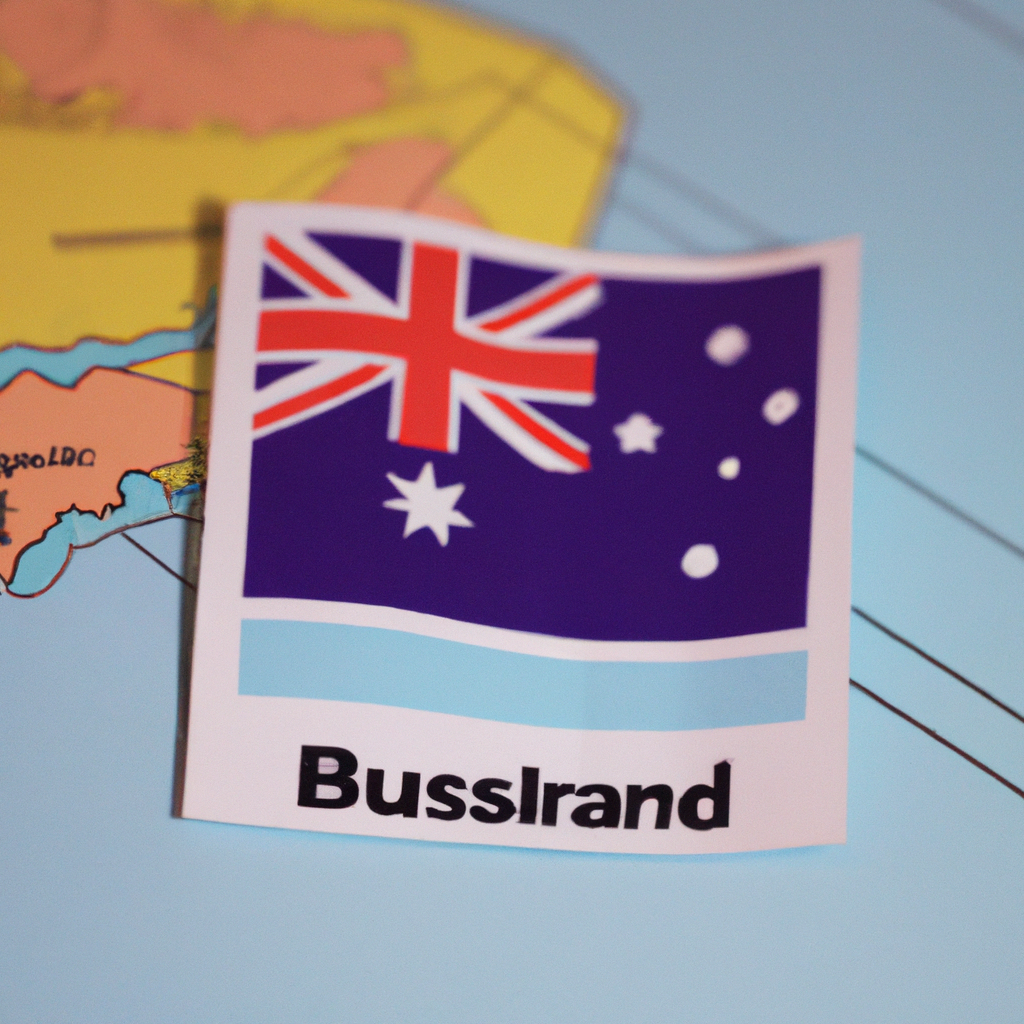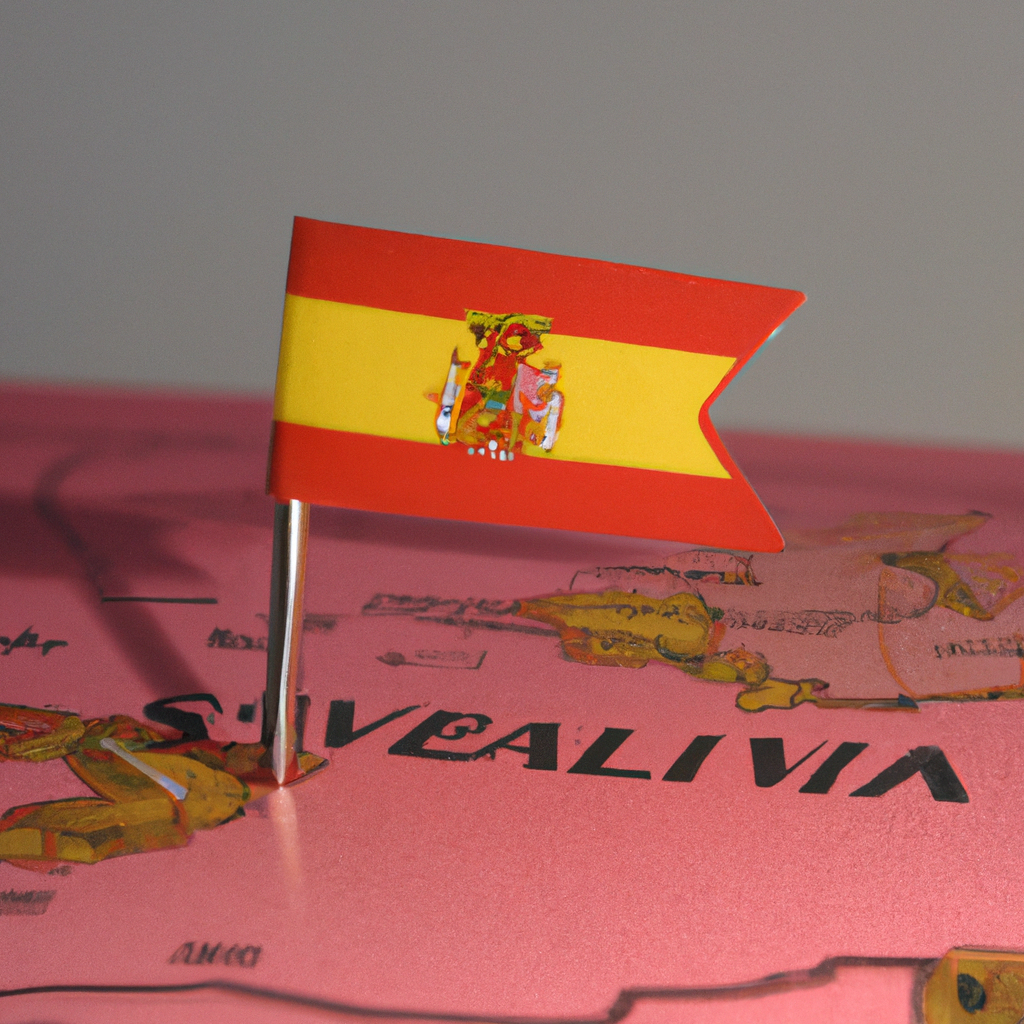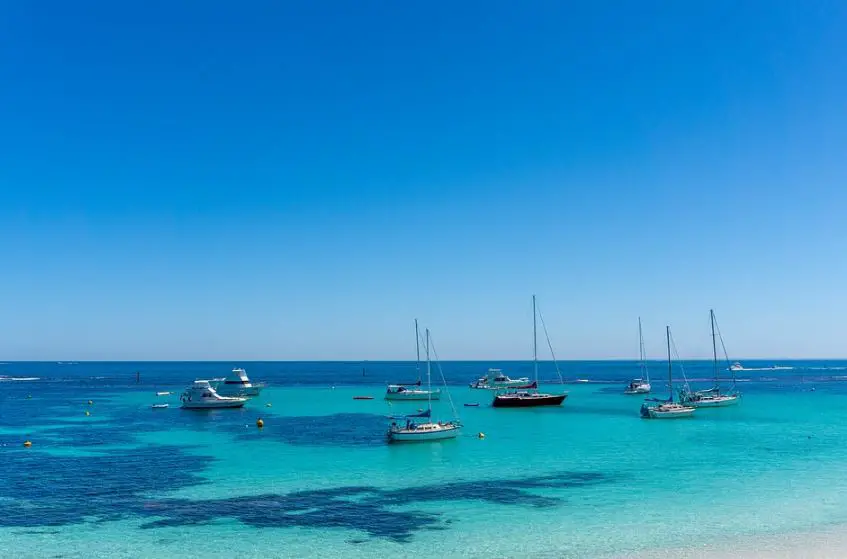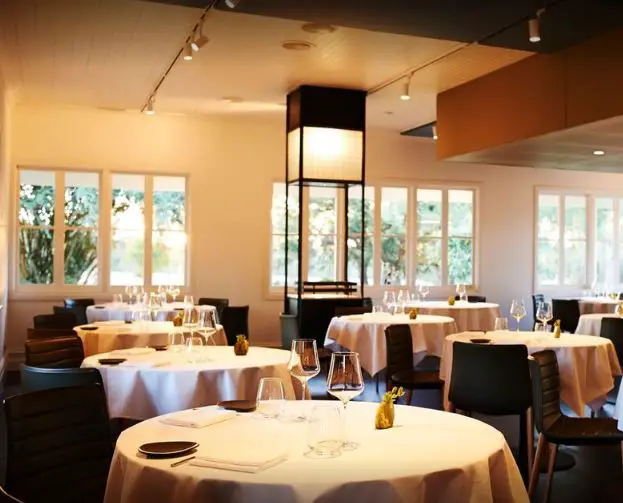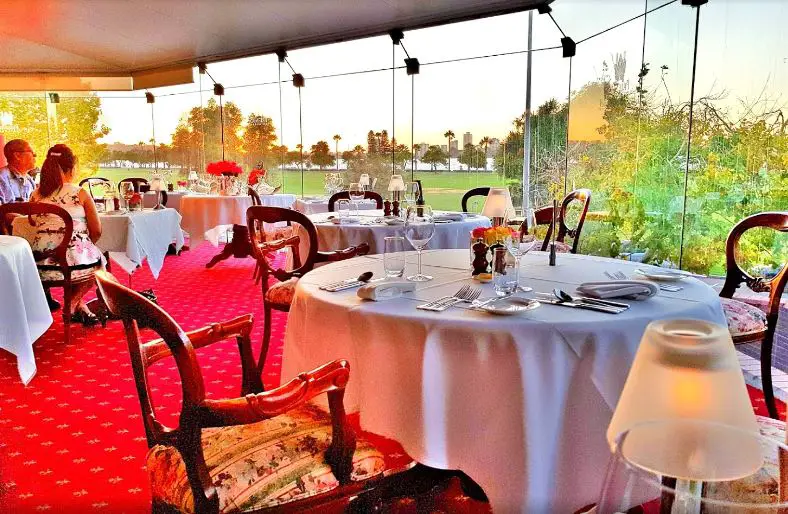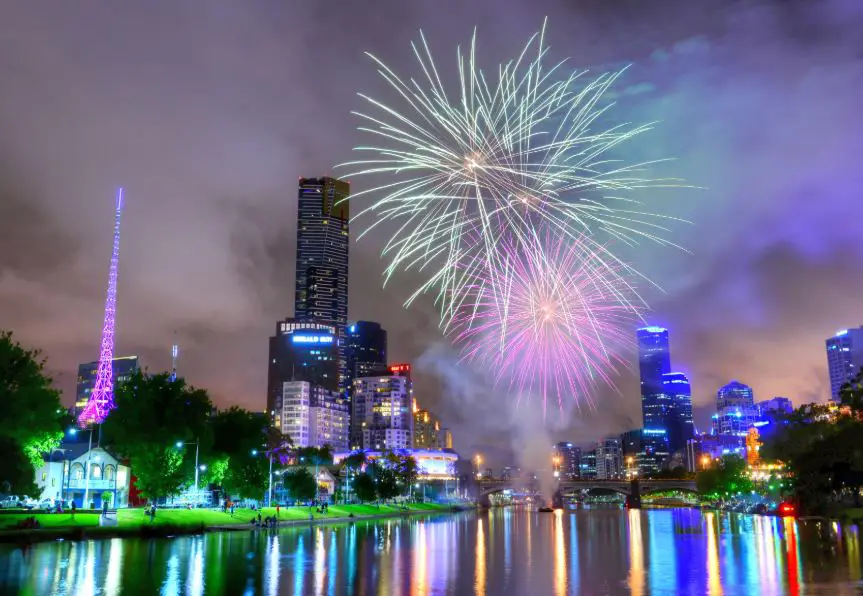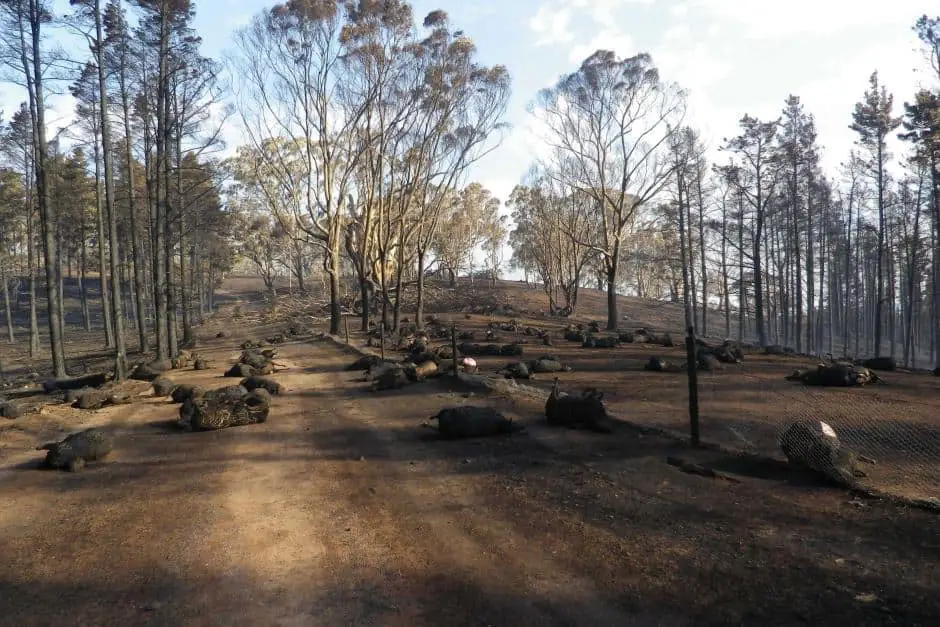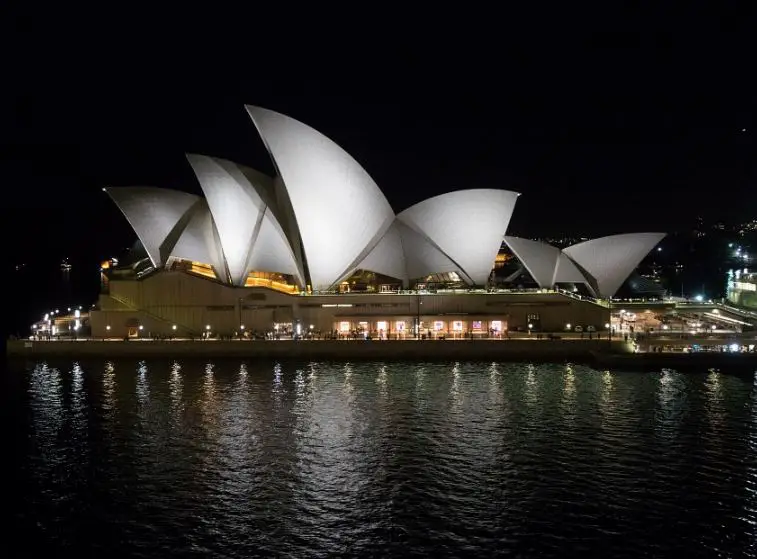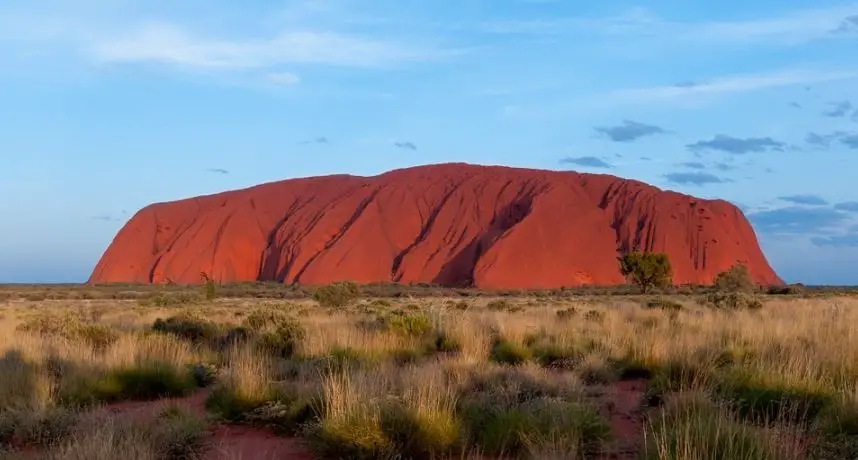Brisbane, Australia: Interesting Facts,History, Things to do,Why to Visit
Post ByAdequate Travel
Brisbane is the capital of the state of Queensland in Australia. The city offers a unique combination of parklands, modern skyline and serene riverbank. With its diverse culture and variety of wondrous attractions, Brisbane is a must-visit destination. There are numerous interesting facts about the vibrant city, including that it is the third-most populated city in Australia and is home to impressive architecture. The city also has a rich history with major influence from both the European settlers and the aboriginal people of the area. When in Brisbane, there is a plethora of activities to explore, from activities ranging from Aussie cuisine to the great outdoors. Not only is Brisbane a bustling city, but it has a laid-back atmosphere that will leave you wanting more. Whether you’re looking for an educational and cultural experience or simply want to have fun - Brisbane is the place to go!
Australia is a country located in the southern hemisphere and is the world's sixth-largest country by total area. It is known for its stunning natural landscapes such as the Great Barrier Reef, Uluru, and the beautiful beaches along the coastline. Australia is a highly urbanized country with a diverse population and a strong economy. It has a parliamentary democracy with a constitutional monarchy and operates as a federal parliamentary democracy. The country is famous for its unique wildlife, including kangaroos, koalas, and unique bird species. The Australian lifestyle is often associated with outdoor activities, sports, and a laid-back attitude. Australia is also known for its diverse cultural scene, including indigenous cultures, modern arts, and a flourishing music and film industry.Explore the popular places in australia, and immerse yourself in its vibrant culture.
Interesting facts
1. Unique Wildlife
Australia is home to a wide array of unique and fascinating wildlife. It is the only country in the world that is home to monotremes, which are egg-laying mammals. One example is the platypus, a curious creature with a duckbill, webbed feet, and the ability to produce venom. Another example is the echidna, a spiny anteater-like mammal. Australia is also known for its diverse range of marsupials, including kangaroos, koalas, and wombats.- The platypus is a fascinating monotreme that lives in freshwater habitats across eastern Australia.
- The kangaroo is a well-known marsupial that is found in various parts of Australia and is known for its powerful jumping ability.- The koala, a marsupial native to Australia, is known for its love for eucalyptus leaves and spends most of its time sleeping.- The wombat is a sturdy marsupial that can be found in many parts of Australia and is known for its burrowing abilities.2. Great Barrier Reef
The Great Barrier Reef, located off the coast of Queensland, is the largest coral reef system in the world. It stretches over 2,300 kilometers (1,429 miles) and is home to countless species of marine life. The vibrant and diverse ecosystem of the reef includes coral, fish, turtles, dolphins, and even sharks.- The Great Barrier Reef is a UNESCO World Heritage Site and one of the most popular destinations for diving and snorkeling.
- It is a breeding ground for various marine species, including green turtles and humpback whales.- The coral formations are a majestic sight, with their brilliant colors and intricate structures.3. Indigenous Culture
Australia's indigenous culture is one of the oldest living cultures in the world. The Aboriginal and Torres Strait Islander peoples have a rich heritage that dates back at least 65,000 years. They have a unique connection to the land, with deep spiritual beliefs and a vast knowledge of the environment.- Dreamtime stories are an integral part of Aboriginal culture, describing the creation of the world and the spirits that shaped it.
- Indigenous art, such as dot painting and rock art, is renowned for its beauty and storytelling.- Traditional bush tucker (food) and medicine are still used and celebrated in Indigenous communities today.4. Stunning Landscapes
Australia boasts a diverse range of landscapes, from pristine beaches to vast deserts and lush rainforests. Some of the most famous natural landmarks include Uluru (Ayers Rock), the Twelve Apostles, the Great Ocean Road, the Blue Mountains, and the Daintree Rainforest.- Uluru is a massive sandstone monolith located in the heart of the Red Centre, and it holds great cultural significance for the indigenous Anangu people.
- The Twelve Apostles are limestone rock formations along the Great Ocean Road in Victoria, and they are a popular tourist attraction.- The Daintree Rainforest in Queensland is one of the oldest rainforests in the world and is home to a diverse range of plant and animal species.5. Sporting Nation
Australians are known for their passion for sports, and Australia has excelled in numerous sporting competitions. Cricket, rugby, Australian rules football, tennis, and swimming are among the most popular sports in the country.- Australia's national cricket team, known as the "Baggy Greens," has a formidable international reputation.
- The Australian Football League (AFL) is highly popular, and the annual Grand Final is a major sporting event.- Australia has produced many world-renowned tennis players, including Margaret Court, Rod Laver, and more recently, Ashleigh Barty.From museums to parks,australia tourist attractions offer something for everyone, making it a versatile destination for all type of tourists.Australia's Indigenous History
Australia has a rich Indigenous history that dates back over 65,000 years. The Indigenous people of Australia are the oldest living culture in the world, with diverse languages, traditions, and artistic expressions. Prior to European colonization, over 250 different Indigenous language groups inhabited the continent.
Examples of Australia's Indigenous history include:
Dreamtime and Creation Stories
The Dreamtime is a significant concept in Indigenous Australian culture. It refers to the spiritual beliefs and creation stories that explain the origin of the world and its natural features. These stories are passed down through generations and are expressed through various forms of art, such as rock paintings and storytelling.
Megafauna and Aboriginal Hunters
Before the arrival of humans in Australia, the continent was home to an array of unique giant animals known as megafauna. Indigenous Australians are believed to have coexisted with these creatures and adapted their hunting techniques to survive alongside them. Examples of megafauna include the giant kangaroo and the marsupial lion.
First European Contact
The history of European contact with Australia began in 1606 when the Dutch explorer Willem Janszoon landed on the continent's northern coast. However, European settlement did not occur until 1788, when Captain James Cook arrived and claimed the eastern part of Australia for Britain.
British Colonization and the Stolen Generations
British settlement in Australia led to significant changes in Indigenous life. The British introduced new diseases, pushed Indigenous people off their land, and imposed their own legal and social systems, often resulting in the displacement and mistreatment of Indigenous communities. One tragic result of these policies was the forced removal of Indigenous children from their families, known as the Stolen Generations.
The Indigenous Rights Movement
From the 1960s onwards, Indigenous Australians started to assert their rights and fight against discrimination. They campaigned for land rights, cultural recognition, and improvements in living conditions. In 2008, the Australian government officially apologized to the Stolen Generations, acknowledging the historical injustices committed against Indigenous Australians.
Reconciliation and Cultural Revival
Today, there are ongoing efforts to reconcile with Australia's Indigenous population and promote their cultural revival. This includes initiatives such as native title rights, Indigenous-led language preservation, and land management programs. The celebration of Aboriginal and Torres Strait Islander cultures is an integral part of modern Australian identity.
Exploring the rich heritage of historical sites in australia is a journey through time and culture.Famous Landmarks in Australia
1. Sydney Opera House
The Sydney Opera House is one of the most iconic landmarks in Australia and a UNESCO World Heritage site. It is a multi-venue performing arts center situated on Sydney Harbour. With its distinctive sail-like design, the Opera House is not only an architectural masterpiece but also hosts various cultural and artistic events.
2. Great Barrier Reef
The Great Barrier Reef is the world's largest coral reef system, stretching over 2,300 kilometers off the coast of Queensland. It is home to a diverse array of marine life and is a popular destination for diving and snorkeling enthusiasts. The vibrant coral formations and abundant marine species make it a natural wonder and a must-visit attraction in Australia.
3. Uluru (Ayers Rock)
Uluru, also known as Ayers Rock, is a sacred red sandstone monolith located in the Uluru-Kata Tjuta National Park in the Northern Territory. It holds great cultural significance for the indigenous Anangu people and is renowned for its changing colors at sunrise and sunset. Uluru is not only a geological wonder but also a symbol of Australia's ancient past and indigenous heritage.
4. Twelve Apostles
The Twelve Apostles is a collection of limestone stacks situated along the Great Ocean Road in Victoria. These towering rock formations were created by erosion, and although only eight apostles remain, they attract numerous tourists due to their stunning beauty. The dramatic cliffs and crashing waves provide an awe-inspiring view, making it a must-see natural attraction in Australia.
5. Bondi Beach
Bondi Beach is a world-famous beach located in Sydney, attracting locals and tourists alike. Known for its golden sand, clear waters, and iconic surf culture, Bondi Beach offers various recreational activities such as swimming, surfing, and coastal walks. The beach is lined with vibrant cafes, restaurants, and shops, making it a popular destination for both relaxation and entertainment.
Discover some unique facts about australia that will leave you amaze and intrigue.Culture of Australia
Australia is a diverse and multicultural country with a rich and vibrant culture influenced by both its indigenous heritage and waves of immigration from various parts of the world. The country's culture can be characterized by its laid-back and egalitarian nature, as well as its emphasis on outdoor activities and sports. Here are some key aspects of Australian culture:
1. Indigenous Heritage:
The Indigenous culture of Australia, which dates back tens of thousands of years, plays a significant role in shaping the country's identity. Aboriginal and Torres Strait Islander peoples have a deep connection to the land and their spiritual beliefs are intertwined with nature. Indigenous art, music, dance, and storytelling are important cultural expressions.
2. Multiculturalism:
Australia is home to people from diverse cultural backgrounds, including immigrants from Europe, Asia, Africa, and the Middle East. This multiculturalism is celebrated, with various festivals, cuisines, and traditions from different cultures being embraced and integrated into Australian society.
3. Sport and Outdoor Lifestyle:
Sports, particularly cricket, Australian Rules football, rugby, and swimming, are an integral part of Australian culture. The country's love for sports is evident in the numerous sporting events, stadiums, and enthusiastic support for their national teams. Australians also enjoy an outdoor lifestyle, thanks to the country's vast natural landscapes, beautiful beaches, and favorable climate.
4. "A Fair Go" Attitude:
Australians value equality, fairness, and giving everyone an equal opportunity, often referred to as the "fair go" attitude. This means promoting social justice, inclusivity, and providing a chance for all individuals to succeed regardless of their background or socioeconomic status.
5. Food and Drink:
Australia has a diverse culinary scene influenced by its multicultural society. Apart from traditional Australian cuisine like meat pies and Vegemite, there is a wide range of international cuisines available. Additionally, Australians have a strong coffee culture, with cafes and specialty coffee shops being popular gathering places.
6. Festivals and Celebrations:
Australians love to celebrate and participate in various festivals and events throughout the year. Some notable celebrations include Australia Day, ANZAC Day, multicultural festivals, music festivals, and the Melbourne Cup horse race.
These are just some examples of the vibrant and diverse culture found in Australia, encompassing both its indigenous roots and the contributions of its multicultural society.Immerse yourself in the local culture by exploring australia's top-rated tourist attractions.Cuisine of Australia
Australia is known for its diverse and multicultural food scene, influenced by its indigenous Aboriginal heritage as well as its immigrant population from various parts of the world. The cuisine of Australia is a melting pot of flavors, incorporating ingredients and cooking techniques from different cultures.Australian Indigenous Cuisine
- Indigenous Australian cuisine is one of the oldest living food traditions in the world. It is based on seasonal, locally sourced ingredients such as kangaroo, emu, bush tomatoes, yams, macadamia nuts, and various bush herbs and spices.
- Examples of indigenous dishes include kangaroo fillet with bush tomato chutney, emu meat pies, or damper (a type of bread) made with native grains.- Indigenous cooking techniques often involve pit baking, smoking, or slow-roasting meats over open fires.British Influence
- Due to its historical ties with Britain, Australian cuisine has been heavily influenced by British culinary traditions.
- Classic British dishes such as fish and chips, meat pies, roast meats, and bangers and mash are popular in Australia.- High tea is also a tradition that has carried over from British culture, with scones, sandwiches, and cakes being enjoyed with a cup of tea.European Influences
- Australia has a large population of European immigrants, leading to the incorporation of various European cuisines into Australian food culture.
- Italian cuisine has had a significant impact, with dishes like pizza, pasta, and gelato being widely consumed.- Greek influences are prominent, with souvlaki and moussaka being popular Greek dishes in Australia.- German sausages, Spanish tapas, and French pastries are also widely enjoyed.Asian Influences
- In recent decades, Asian cuisine has become increasingly popular in Australia due to its proximity to Asia and a significant Asian immigrant population.
- Chinese, Thai, Vietnamese, Japanese, and Indian cuisines have all made their mark on Australian food culture.- Examples include stir-fries, sushi, pho, curries, and satay dishes.Fusion Cuisine
- With the diverse cultural influences in Australia, fusion cuisine has emerged as a popular trend.
- This involves combining elements and flavors from different cuisines to create unique and innovative dishes.- For example, Thai-inspired salads with Australian native ingredients, or fusion burgers with Asian spices and toppings.Overall, the cuisine of Australia is a vibrant blend of indigenous, European, Asian, and fusion influences. It reflects the multicultural nature of the country and offers a wide range of flavors and culinary experiences.Step back in time as you visit the historical sites in australia, where the past comes alive.Things to Do in Australia
1. Explore the Great Barrier Reef
Australia is home to the spectacular Great Barrier Reef, an underwater wonderland that stretches over 2,300 kilometers. Embark on a snorkeling or diving adventure to explore the colorful coral reefs and swim alongside a variety of marine life, including tropical fish, turtles, and dolphins.
Example: Snorkel in the vibrant waters of the Great Barrier Reef and witness the stunning coral formations up close. Dive into the depths to discover unique marine species, such as the majestic manta rays and the elusive whale sharks.
2. Discover the Sydney Opera House
Sydney Opera House is an iconic landmark known for its distinct sail-shaped architecture. Take a guided tour to learn about its history and design, or catch a live performance at one of its world-class venues. The Opera House is located in Sydney, a vibrant city with a bustling dining and nightlife scene.
Example: Take a backstage tour of the Sydney Opera House and gain insight into the workings of this iconic performing arts venue. Attend a captivating opera or ballet performance in one of its elegant theaters.
3. Experience the Outback
The Australian Outback offers a unique and rugged landscape characterized by vast open spaces, red deserts, and ancient rock formations. Visit Uluru (Ayers Rock), a massive sandstone monolith, and witness the breathtaking sunset or sunrise over this sacred site. Explore national parks like Kakadu, where you can encounter diverse wildlife and learn about Aboriginal culture.
Example: Embark on a guided hike through Kings Canyon in the heart of the Outback. Marvel at the towering sandstone walls and panoramic views of the surrounding desert landscape.
4. Visit the Great Ocean Road
The Great Ocean Road is a scenic coastal drive in Victoria, offering breathtaking views of rugged cliffs, pristine beaches, and the famous limestone formations known as the Twelve Apostles. Enjoy activities like surfing, beach exploring, and hiking along the picturesque route.
Example: Take a helicopter ride along the Great Ocean Road to witness the stunning coastline from a bird's-eye view. Snap pictures of the iconic Twelve Apostles standing majestically against the crashing waves.
5. Immerse Yourself in Indigenous Culture
Australia is home to a rich Indigenous heritage that spans thousands of years. Engage with Aboriginal communities and learn about their ancient traditions, artwork, and Dreamtime stories. Join cultural tours, attend Indigenous festivals, or visit rock art sites to gain a deeper understanding and appreciation of Australia's First Peoples.
Example: Participate in a Didgeridoo workshop led by Aboriginal elders, where you can learn to play this traditional instrument and understand its significance in Indigenous culture.
When planning your trip to australia, be sure to include the best things to do in australia, which encompass a wide range of cultural experiences.Climate of Australia
Australia experiences a wide range of climate zones due to its vast size and geographical diversity. The country has predominantly three main climate types: tropical, arid, and temperate. These climate zones further influence the weather patterns and conditions across different regions of Australia.
Tropical Climate
Some parts of northern Australia, near the equator, have a tropical climate. This region generally experiences high temperatures throughout the year and has distinct wet and dry seasons. The wet season occurs during the summer months, typically from November to April, and is characterized by heavy rainfall, thunderstorms, and high humidity. In contrast, the dry season, which falls between May and October, is marked by lower rainfall and milder temperatures.
Arid Climate
The arid or desert climate dominates the central regions of Australia, known as the Outback. These areas are extremely dry, with low annual rainfall and high temperatures. Summers are scorching hot with temperatures often exceeding 40 degrees Celsius (104 degrees Fahrenheit), while winters can be cool to cold, particularly during the nights.
Temperate Climate
The temperate climate zone covers much of the eastern and southern parts of Australia. This region experiences mild to warm summers and cool winters. Precipitation is spread fairly evenly throughout the year. However, some areas, such as coastal regions, receive higher rainfall due to the influence of ocean currents. The mountainous regions of Australia, including the Australian Alps, have a cooler climate with snowfall in winter.
Examples of Climate Variations
1. The city of Darwin in Northern Territory experiences a tropical climate. It has a distinct wet and dry season, with heavy rainfall during the wet season and milder temperatures during the dry season.
2. The town of Alice Springs in the central region of Australia has an arid climate. It is characterized by extremely high temperatures in summer and cold nights during winter.
3. Sydney, a city on the east coast, falls under the temperate climate zone. It has mild summers, cool winters, and receives moderate rainfall throughout the year.
4. The Australian Alps, including places like Mount Kosciuszko, have a cool mountain climate. They experience colder temperatures, particularly in winter, and receive snowfall.
Uncover the best australia attractions that will leave you awe-inspired and wanting more.Popular Activities in Australia
There are numerous popular activities one can engage in while visiting Australia. Some of these activities include:1. Exploring the Great Barrier Reef
Exploring the Great Barrier Reef is a must-do activity for nature lovers and adventure seekers. This majestic natural wonder stretches over 2,300 kilometers and is home to a vast array of marine life. Visitors can go snorkeling or diving to admire the colorful coral reefs, swim with tropical fish, and potentially spot marine creatures like turtles, dolphins, and even whales.
2. Visiting Sydney Opera House
A visit to Sydney Opera House is a must when in Australia. This iconic and architecturally stunning building is a UNESCO World Heritage site. Visitors can attend various performances ranging from opera and ballet to theater and concerts. Taking a guided tour of the Opera House allows tourists to learn about its history and unique design.
3. Exploring the Outback
The Australian Outback offers a unique and unparalleled experience for adventure enthusiasts. This vast, arid region stretches across most of central Australia and is characterized by its stunning landscapes and wildlife. Visitors can take part in guided tours, camel rides, or even go on self-driving adventures to explore iconic landmarks like Uluru (Ayers Rock) and Kata Tjuta (the Olgas).
4. Wildlife Encounters at Kangaroo Island
Kangaroo Island, located off the South Australian coast, is renowned for its wildlife encounters. Visitors can observe kangaroos, koalas, wallabies, and sea lions in their natural habitat. The island also offers opportunities for wildlife conservation education, as there are various sanctuaries and parks where visitors can learn about and interact with native Australian animals.
5. Visiting the Great Ocean Road
The Great Ocean Road is a famous coastal drive in Victoria, renowned for its breathtaking scenery. Visitors can witness the iconic Twelve Apostles rock formations, explore picturesque coastal towns, and enjoy stunning ocean views along the way. The route also offers opportunities for hiking, wildlife spotting, and enjoying pristine beaches.
Plan your trip with a list of the best things to do in australia, catering to all interests.Nightlife in Australia
Australia is known for its vibrant and diverse nightlife scene. From bustling cities to coastal towns, there are various options for everyone to enjoy their evenings. Here are some key highlights of the nightlife in Australia:
1. Melbourne
Melbourne is often referred to as the cultural hub of Australia, and its nightlife reflects this diversity. The city boasts numerous laneways filled with trendy bars and clubs. Areas like Fitzroy, Collingwood, and St. Kilda are particularly popular for their lively atmosphere and vibrant music scene.
2. Sydney
Sydney offers a mix of stylish bars, rooftop venues, and iconic nightclubs. The city's nightlife is centered around areas like Kings Cross, Surry Hills, and Darling Harbour. From hidden speakeasies to large-scale dance clubs, Sydney caters to various tastes and preferences.
3. Brisbane
Brisbane has a more relaxed and laid-back nightlife compared to Melbourne and Sydney. The Fortitude Valley precinct is known for its live music scene, with numerous pubs and bars hosting local and international bands. South Bank is another popular area, offering riverfront dining and entertainment options.
4. Perth
Perth's nightlife is vibrant and eclectic. The Northbridge district is a hotspot, with a wide range of bars, clubs, and live music venues. The city also offers numerous rooftop bars with stunning views of the skyline. Fremantle, a coastal suburb of Perth, is known for its historic pubs and lively music scene.
5. Gold Coast
The Gold Coast is renowned for its lively party scene, particularly in Surfers Paradise. The area is lined with bars, nightclubs, and lounges, attracting both locals and tourists. From beachside clubs to rooftop venues, there are plenty of options to dance the night away in this coastal city.
6. Adelaide
Adelaide has a thriving bar and pub culture, with a focus on small, intimate venues. Areas like Peel Street and Leigh Street offer a selection of trendy bars serving craft beers and cocktails. Adelaide also hosts various music festivals and events throughout the year.
Overall, Australia's nightlife offers something for everyone, whether you prefer a trendy rooftop bar in the city or a relaxed beachside vibe. It is important to note that each state and city may have different licensing laws and regulations governing nightlife activities, so it is advisable to familiarize yourself with local policies when exploring the nightlife scene in Australia.Discover unique facts about australia, a destination filled with rich history and natural beauty.Reasons to Visit Australia
Australia is a diverse and beautiful country that offers a wide range of attractions and experiences for all types of travelers. From breathtaking natural landscapes to vibrant cities and unique wildlife, Australia has something for everyone. Here are some compelling reasons to visit Australia:
1. Natural Beauty
Australia is known for its stunning natural landscapes, including the Great Barrier Reef, Uluru (Ayers Rock), the Tasmanian Wilderness, the Daintree Rainforest, and the iconic Sydney Harbour. These natural wonders provide opportunities for snorkeling, diving, hiking, and exploring unique ecosystems.
2. Vibrant Cities
Australia boasts lively and cosmopolitan cities such as Sydney, Melbourne, Brisbane, Perth, and Adelaide. These cities offer a vibrant mix of modern architecture, cultural events, shopping, dining, and nightlife. Sydney, for example, is famous for its iconic landmarks like the Sydney Opera House and the Sydney Harbour Bridge.
3. Rich Aboriginal Culture
Australia is home to the world's oldest living culture, with a vibrant Aboriginal heritage. Visitors can immerse themselves in Aboriginal art, music, dance, and storytelling, learning about the ancient traditions and spirituality of the Indigenous people. There are several opportunities to visit Aboriginal cultural centers and participate in cultural activities.
4. Unique Wildlife
Australia is renowned for its unique and diverse wildlife. From cuddly koalas and kangaroos to the fascinating marine life of the Great Barrier Reef, there are plenty of opportunities to encounter Australia's extraordinary animals. The country is also known for its various bird species, including colorful parrots and the famous emu.
5. Outdoor Adventures
With its abundance of natural landscapes and a favorable climate, Australia is an adventure lover's paradise. Visitors can enjoy activities like scuba diving in the Great Barrier Reef, surfing along the coastline, hiking in national parks, camping in the Outback, or even exploring the famous red desert on a quad bike or camel.
6. Pristine Beaches
Australia is blessed with some of the most beautiful and pristine beaches in the world. Whether it's the world-famous Bondi Beach in Sydney, Whitehaven Beach in the Whitsundays, or the remote stretches of coastline in Western Australia, there is a beach for every preference. Visitors can engage in sunbathing, swimming, surfing, or simply taking a leisurely stroll along the sandy shores.
Overall, Australia offers a diverse range of attractions and experiences that make it a compelling destination for travelers. Whether you seek natural beauty, cultural encounters, wildlife adventures, or outdoor activities, Australia has it all.Whether you're a history buff or an adventure seeker, australia has an attraction for you. So, don't miss the chance to visit popular places in australiaNumber of Days Required to Visit Australia
Australia is a vast and diverse country with numerous attractions, ranging from stunning natural landscapes to vibrant cities. The duration of a visit to Australia can vary depending on the specific interests, budget, and time available. However, below are some factors to consider when determining the number of days required to visit Australia:
1. Size and Diversity
Australia is the sixth-largest country in the world and offers a wide range of attractions spread across its vast land. To fully experience the diversity and beauty of the country, it is recommended to spend a considerable amount of time exploring its various regions. Ideally, a visit of at least two to three weeks would allow you to cover major areas and landmarks.
For example, you can spend a few days exploring Sydney's iconic landmarks like the Sydney Opera House and Sydney Harbour Bridge. Then, you can head to Queensland to explore the Great Barrier Reef and the tropical rainforests of Daintree National Park. Lastly, you can visit the unique rock formations of Uluru in the Northern Territory or venture to Western Australia to explore the stunning landscapes of the Kimberly region.
2. Activities and Interests
Your preferred activities and interests also play a significant role in determining the duration of your visit. For instance, if you are an avid outdoor enthusiast and enjoy activities such as hiking, diving, or wildlife spotting, you may want to allocate additional time to specific regions that offer these opportunities, such as the Blue Mountains, Great Ocean Road, or Kangaroo Island.
If you are more interested in urban experiences, you may choose to spend a majority of your time in cities like Melbourne or Brisbane, exploring their art, culture, and culinary scenes. In such cases, a shorter visit of about one to two weeks might be sufficient.
3. Travel Restrictions and Logistics
Travel restrictions and logistics can also impact the duration of your visit. Depending on your nationality, you may need to obtain a visa to enter Australia and comply with certain entry requirements. It is important to consider the time required for visa processing and planning accordingly.
Furthermore, due to the distances between various regions in Australia, travel time should be taken into account. Internal flights or long drives may be necessary to move between destinations, which can affect the overall duration of your visit.
In conclusion, the number of days required to visit Australia varies based on factors such as the size and diversity of the country, your preferred activities and interests, and travel restrictions and logistics. It is recommended to spend at least two to three weeks to experience the highlights of Australia, but shorter visits can also be enjoyable depending on your preferences and available time. Ultimately, it is essential to plan and prioritize the places and experiences you wish to explore to make the most of your visit to this incredible country.Discover the untold stories behind australia unique facts, and historical treasures.Significance of Australia
Australia, the world's smallest continent, is a country that holds immense significance for various reasons. Its unique geographical location, diverse ecosystems, rich natural resources, and cultural heritage contribute to its global importance. Here are some key points explaining the significance of Australia:1. Biodiversity and Unique Ecosystems
Australia is known for its incredible biodiversity and unique ecosystems. The country is home to a vast array of endemic plants and animals, including iconic species such as kangaroos, koalas, and platypuses. The Great Barrier Reef, located off the coast of Queensland, is the world's largest coral reef system and a UNESCO World Heritage Site, showcasing exceptional marine biodiversity.
2. Natural Resources
Australia possesses abundant natural resources, making it a significant player in the global economy. The country is the world's largest exporter of coal, iron ore, and liquefied natural gas (LNG). Its mining industry supports economic growth and provides employment opportunities.
3. Economic Stability
Australia has one of the most stable and prosperous economies globally. It has experienced uninterrupted economic growth for almost three decades, primarily due to its diverse industries, skilled workforce, and strong trade ties with countries in the Asia-Pacific region. The country's economic stability attracts foreign investments and facilitates international trade.
4. Education and Research
Australia is renowned for its high-quality education system and world-class research institutions. Several Australian universities consistently rank among the top in the world. The country also attracts a significant number of international students who contribute to its multicultural society while gaining high-quality education.
5. Cultural Heritage and Tourism
Australia's rich cultural heritage, indigenous history, and diverse population make it an intriguing destination for tourists. The country's ancient Aboriginal rock art sites, such as Kakadu National Park, provide insights into one of the world's oldest living cultures. Additionally, landmarks like the Sydney Opera House, Uluru (Ayers Rock), and the Twelve Apostles along the Great Ocean Road are popular tourist attractions.
In conclusion, Australia holds significant global importance due to its unique biodiversity, abundance of natural resources, economic stability, excellence in education and research, and intriguing cultural heritage. These factors contribute to the country's influence and attractiveness on the world stage.From hidden gems to iconic landmarks, australia has something for every traveler's taste.1. What is the capital city of Australia?
The capital city of Australia is Canberra. It is located in the Australian Capital Territory (ACT) and was purpose-built to serve as the national capital. Canberra was chosen as the capital in 1908 and construction started in 1913. The city is home to many national institutions and landmarks, including Parliament House and the Australian War Memorial.
- Example: Canberra is known for its planned layout with wide roads and spacious green areas.
- Example: The architectural design of Parliament House is a prominent feature of Canberra.
2. What are the major cities in Australia?
Australia has several major cities apart from Canberra, including:
- Sydney: Known for its iconic landmarks like the Sydney Opera House and Harbour Bridge.
- Melbourne: Popular for its vibrant cultural scene, sports events, and dining options.
- Brisbane: A city renowned for its sunny climate, outdoor activities, and riverfront attractions.
- Perth: Located on the west coast, it is known for its beautiful beaches and relaxed lifestyle.
- Adelaide: Famous for its festivals, wine regions, and colonial architecture.
3. What are some popular tourist attractions in Australia?
Australia offers a wide range of captivating tourist attractions. Some of the most popular ones include:
- The Great Barrier Reef: One of the world's most remarkable natural wonders, perfect for snorkeling and diving.
- Sydney Opera House: A UNESCO World Heritage Site and an architectural masterpiece.
- Uluru (Ayers Rock): A massive sandstone monolith located in the heart of Australia's Red Centre.
- The Great Ocean Road: A picturesque coastal drive in Victoria featuring stunning cliffs and rock formations.
- The Twelve Apostles: A collection of limestone stacks off the shore of the Great Ocean Road.
4. What is the currency used in Australia?
The currency used in Australia is the Australian Dollar (AUD). It is divided into 100 cents and is available in banknotes of $5, $10, $20, $50, and $100 denominations, as well as coins of $1 and $2, and 5, 10, 20, and 50 cents. Credit and debit cards are widely accepted in most establishments, and ATMs are readily available throughout the country.
5. What is the official language of Australia?
The official language of Australia is English. English is widely spoken and understood across the country, forming an essential part of Australian culture and identity.
6. Is Australia a safe country to visit?
Australia is generally considered a safe country to visit. The country has a stable political system, well-developed infrastructure, and an efficient healthcare system. However, like any destination, it is essential to follow common safety practices, avoid risky areas, and take necessary precautions to ensure your personal safety.
Explore the popular places in australia, and immerse yourself in its vibrant culture.